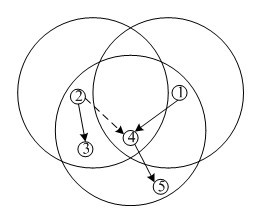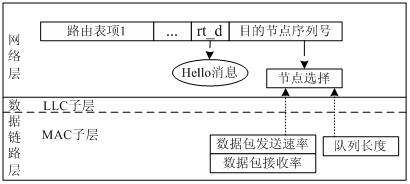Cross-layer QOS (Quality of Service) routing method based on node occupancy rate in wireless sensor network
A wireless sensor and occupancy technology, applied in wireless communication, electrical components, etc., can solve the problems of energy consumption, frequent occurrence, and increased delay of task transmission data.
- Summary
- Abstract
- Description
- Claims
- Application Information
AI Technical Summary
Problems solved by technology
Method used
Image
Examples
Embodiment Construction
[0032]The present invention will be further described below in conjunction with drawings and embodiments.
[0033] A cross-layer QOS routing method based on node occupancy in a wireless sensor network, the routing steps are as follows:
[0034] 1) The source node sends a RREQ packet message to an idle adjacent node, and if there is no idle adjacent node, sends a RREQ packet message to an adjacent node with low occupancy;
[0035] 2) After receiving the RREQ packet message, the intermediate node compares the target node address with its own routing table, if the target node address is in the routing table, then go to step 3); if the target node address is not in the routing table, then go to step 4);
[0036] 3) Send the RREQ packet message to the target node;
[0037] 4) Send a RREQ packet message to an idle adjacent node, if there is no idle adjacent node, send a RREQ packet message to an adjacent node with a low occupancy, and return to step 2);
[0038] 5) After the targe...
PUM
 Login to View More
Login to View More Abstract
Description
Claims
Application Information
 Login to View More
Login to View More - R&D
- Intellectual Property
- Life Sciences
- Materials
- Tech Scout
- Unparalleled Data Quality
- Higher Quality Content
- 60% Fewer Hallucinations
Browse by: Latest US Patents, China's latest patents, Technical Efficacy Thesaurus, Application Domain, Technology Topic, Popular Technical Reports.
© 2025 PatSnap. All rights reserved.Legal|Privacy policy|Modern Slavery Act Transparency Statement|Sitemap|About US| Contact US: help@patsnap.com



